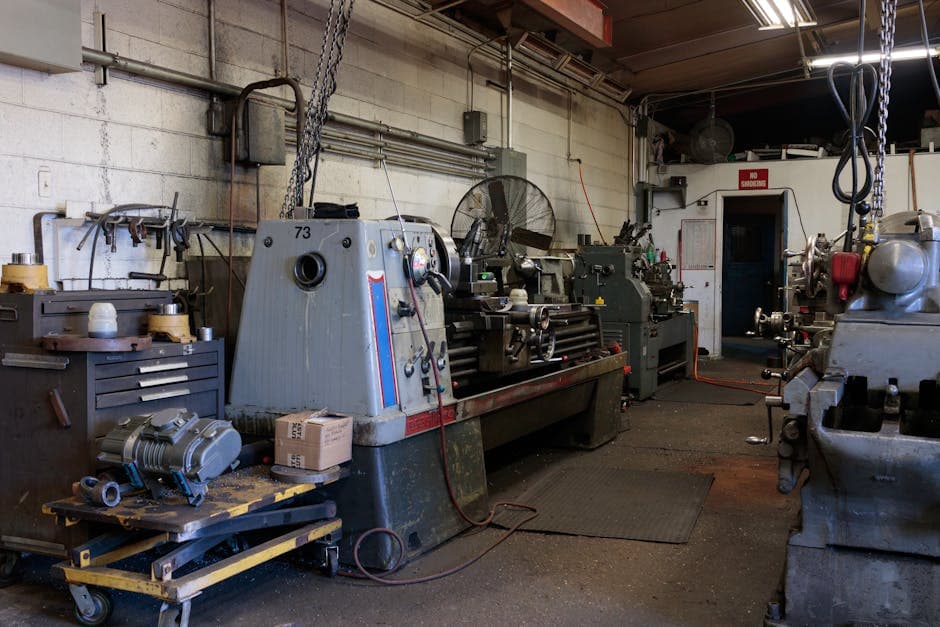
Digital Transformation in Oil & Gas: Key Technologies for 2024
The oil and gas industry is undergoing a significant digital transformation in 2024, with new technologies revolutionizing operations across the value chain. As an industry partner, HPATS is helping clients navigate these changes and implement solutions that enhance efficiency, safety, and sustainability.
The Digital Revolution in Oil & Gas
Digital technologies are no longer optional in the oil and gas sector—they've become essential tools for addressing industry challenges and improving operations. From exploration to distribution, technology is reshaping how companies operate and compete in a changing energy landscape.
Digital Twins: Virtual Replicas Driving Real Results
Digital twins—virtual replicas of physical assets like drilling rigs, pipelines, and processing facilities—are emerging as one of the most transformative technologies in the industry. These sophisticated models bridge the gap between physical and digital worlds, allowing engineers to:
- Visualize complex operations in real-time
- Test modifications and optimizations virtually before implementing them
- Predict maintenance needs before equipment failures occur
- Train personnel in a risk-free environment
- Enhance collaboration across teams and locations
By implementing digital twins, companies are reporting maintenance cost reductions of up to 30% and efficiency improvements of 20% or more in some operations. At HPATS, we're working with several clients to implement digital twin solutions for critical infrastructure, helping them realize these benefits while minimizing implementation challenges.
AI and Machine Learning: From Data to Decisions
The oil and gas industry generates enormous volumes of data from sensors, equipment, and operations. Advanced analytics, artificial intelligence (AI), and machine learning (ML) have become indispensable for turning this data into actionable insights.
Key applications include:
- Predictive Maintenance: Algorithms that analyze equipment performance data to predict potential failures before they occur, reducing downtime and maintenance costs
- Reservoir Modeling: ML techniques that improve accuracy in identifying promising drilling locations and optimizing production
- Process Optimization: AI systems that continuously analyze and adjust operational parameters to maximize efficiency and output
- Risk Assessment: Models that evaluate safety and environmental risks more comprehensively than traditional methods
According to industry research, enterprises that establish AI engineering best practices generate three times more value from their AI efforts than those that don't. In 2024, more oil and gas companies will be investing in their AI tech stack to remain competitive and optimize operations.
IoT and Sensor Technology: The Connected Field
Internet of Things (IoT) devices and advanced sensors are transforming how companies monitor and manage field operations. These technologies enable:
- Real-time monitoring of equipment performance and conditions
- Remote operation of facilities, reducing personnel requirements in hazardous environments
- Automated data collection that eliminates manual readings and associated errors
- Early detection of leaks, emissions, and other environmental concerns
- Integration of field data with enterprise systems for better decision-making
The global IoT market in oil and gas is expected to reach USD 43 billion by the end of 2024, growing at a CAGR of about 22% from 2019. This rapid growth reflects the significant benefits these technologies offer in terms of operational efficiency, safety enhancement, and environmental protection.
Robotics and Automation: The New Workforce
Robotic technologies are transforming various aspects of oil and gas operations, particularly in environments that are hazardous or difficult for humans to access:
- Autonomous Drones: Equipped with high-resolution cameras and sensors, drones are performing aerial inspections of offshore platforms, pipelines, and facilities
- Robotic Drilling Systems: Advanced systems with AI algorithms that optimize drilling parameters in real-time
- Underwater Robotics: ROVs (Remotely Operated Vehicles) and AUVs (Autonomous Underwater Vehicles) that inspect and maintain subsea infrastructure
- Pipeline Inspection Robots: Specialized robots that travel inside pipelines to detect corrosion, cracks, and other issues
These innovations not only reduce operational costs but also significantly mitigate safety risks by minimizing human exposure to dangerous environments. The global oil and gas robotics market is projected to grow at a CAGR of 12.5% through 2025, reflecting the industry's increasing reliance on these technologies.
Implementation Challenges and Solutions
While the benefits of digital transformation are clear, implementation presents several challenges for oil and gas companies:
Integration with Legacy Systems
Many oil and gas facilities operate with equipment and control systems that are decades old. Integrating modern digital technologies with these legacy systems requires careful planning and specialized expertise. At HPATS, we've developed approaches that bridge the gap between old and new, allowing companies to leverage digital benefits without wholesale replacement of functional infrastructure.
Cybersecurity Concerns
As operations become more connected, they also become more vulnerable to cyber threats. Robust cybersecurity measures are essential, especially for critical infrastructure. Our partnerships with leading cybersecurity firms enable us to offer comprehensive protection strategies tailored to the unique needs of industrial control systems.
Workforce Adaptation
Digital transformation requires new skills and approaches from the workforce. Training programs and change management strategies are crucial for successful implementation. HPATS offers training solutions that help technical teams adapt to new technologies while leveraging their valuable industry experience.
The Path Forward
For oil and gas companies looking to embrace digital transformation, we recommend a phased approach:
- Assessment: Evaluate current operations and identify high-value opportunities for digital enhancement
- Strategy Development: Create a comprehensive digital roadmap aligned with business objectives
- Pilot Implementation: Start with targeted projects that demonstrate value and build organizational capability
- Scaling: Expand successful initiatives across the organization
- Continuous Improvement: Regularly reassess and refine digital strategies as technologies evolve
At HPATS, we're committed to helping our clients navigate this digital journey. Our team combines deep industry knowledge with technical expertise to deliver solutions that address real business challenges and create sustainable competitive advantages.
Conclusion
Digital transformation in the oil and gas industry is not just about adopting new technologies—it's about fundamentally reimagining how operations are performed to achieve greater efficiency, safety, and sustainability. The technologies highlighted in this article represent some of the most impactful trends we're seeing in 2024, but the landscape continues to evolve rapidly.
Companies that successfully navigate this transformation will be well-positioned to thrive in an increasingly competitive and complex market environment. As your partner in industrial solutions, HPATS is here to help you leverage these innovations to achieve your business objectives.
Contact our team to discuss how we can support your digital transformation initiatives with the right products, expertise, and implementation strategies.
About the Author
Robert Chen
Expert in Technology with years of industry experience. Regularly contributes insights and analysis on industrial trends and technologies.
You Might Also Like

Advanced Water Treatment Technologies: Innovations for Industrial Applications
Discover the latest innovations in industrial water treatment technology, from smart water management systems and advanced membranes to PFAS removal solutions and resource recovery systems...

The Importance of Quality Valves in Oil and Gas Operations
In the oil and gas industry, the reliability and performance of equipment are paramount to ensuring operational efficiency, safety, and envi

Water Conservation Technologies for Industrial Applications
Water is a precious resource that is increasingly under pressure from growing demand, pollution, and climate change. For industrial faciliti
